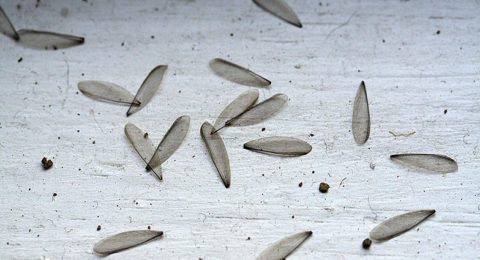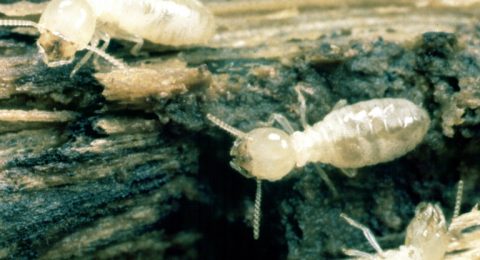Drywood Termites
Drywood termites are a danger to any wood in your home, inside or out. They form colonies where each termite has a special function in … Continue Reading

Drywood termites are a danger to any wood in your home, inside or out. They form colonies where each termite has a special function in … Continue Reading

Formosan termites are arguably the most dangerous type of termite to invade a home. These termites devour wood 24/7, and colonies may include upward of … Continue Reading

Subterranean termites are the most common type of termite to infest homes in the United States. As their name suggests, they attack homes from underground, … Continue Reading

Drywood termites excrete droppings and kick them out of tiny holes. The droppings often resemble coffee grounds. These pellets build up around baseboards, windowsills, furniture … Continue Reading

A termite swarm often leaves behind termite wings or even dead termites. These can typically be found in small piles near window ledges or other … Continue Reading

If you notice bubbles, blisters or soft spots on wooden objects such as your wood floors or windowsills, this may indicate termites. These blisters highlight … Continue Reading

(Length: 1/8″ – 3/8″) These are social insects living in colonies in the soil. The colony is made up of workers, soldiers and reproductives. Subterranean termite colonies feed on wood or other cellulose material such as paper, cardboard and fiberboard.

(Length: 1/2″) These dark brown to black winged insects are the male and female reproductives. They emerge from the colony in a dark cloud at least once per year. Their short flight drops them to the ground where they then seek the proper conditions for the king and queen to start a small brood chamber in the soil.

(Length: About 1/2″) Like subterranean termites, Formosan termites feed on cellulose material (i.e. wood), but they are more aggressive and attack wood at a much faster rate.

(Length: Up to 1/2″) This termite species does not live in the ground, but lives inside wood. They are most likely to be found in humid, coastal areas. Their colonies are much smaller than subterranean termites, and infestations found in wood are usually confined to a small area.

(Length: about 3/16″) These brown flying insects, identified by 3 darker veins on the front edge of their wings, swarm in late Spring and early Summer.

(Length: 1/8″ – 1/4″) Adults are reddish brown to black and very slender. The powder post beetle damages seasoned hardwoods such as flooring, furniture and structural woods. The larva, living in and eating the wood, can take up to four years to develop.